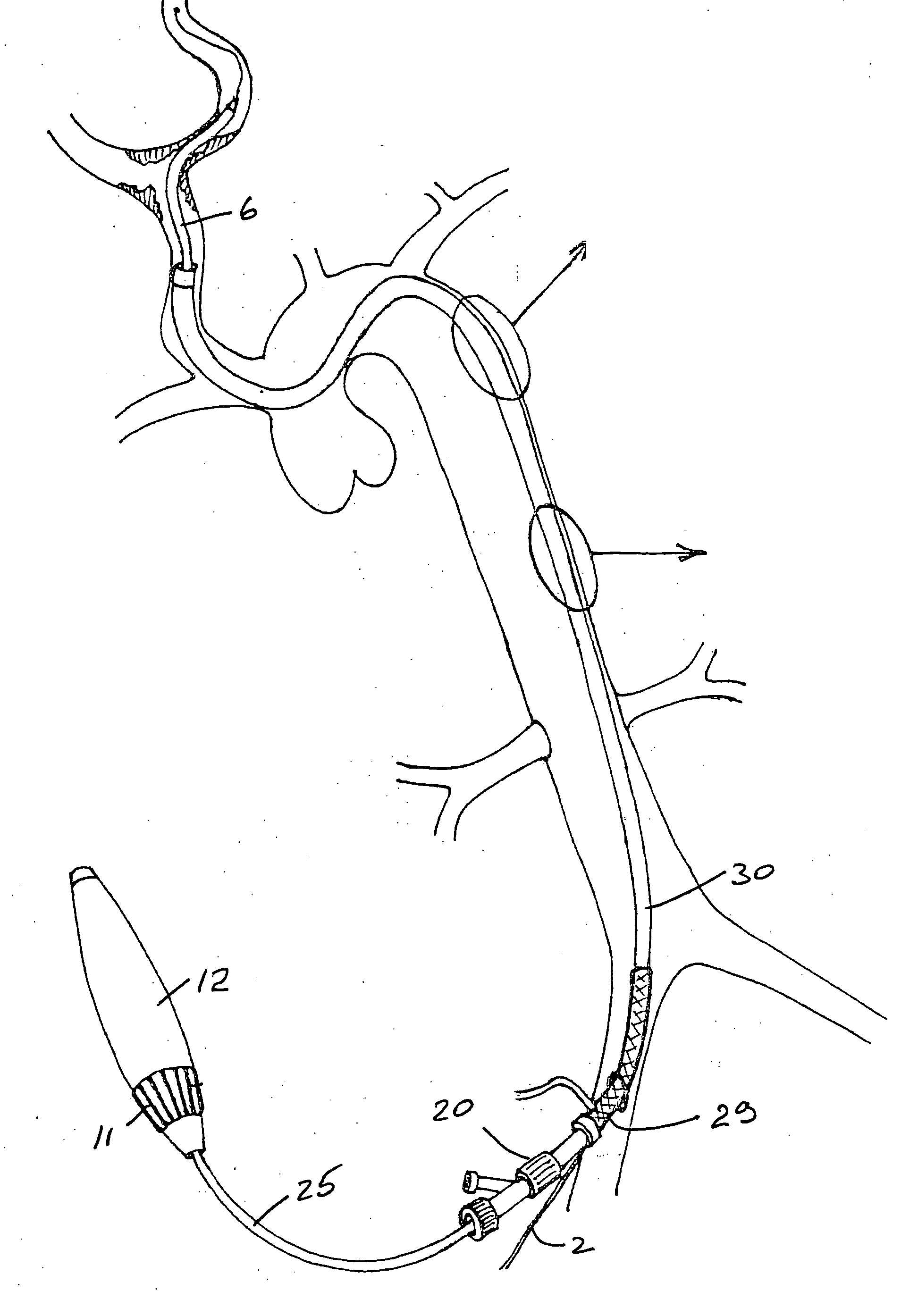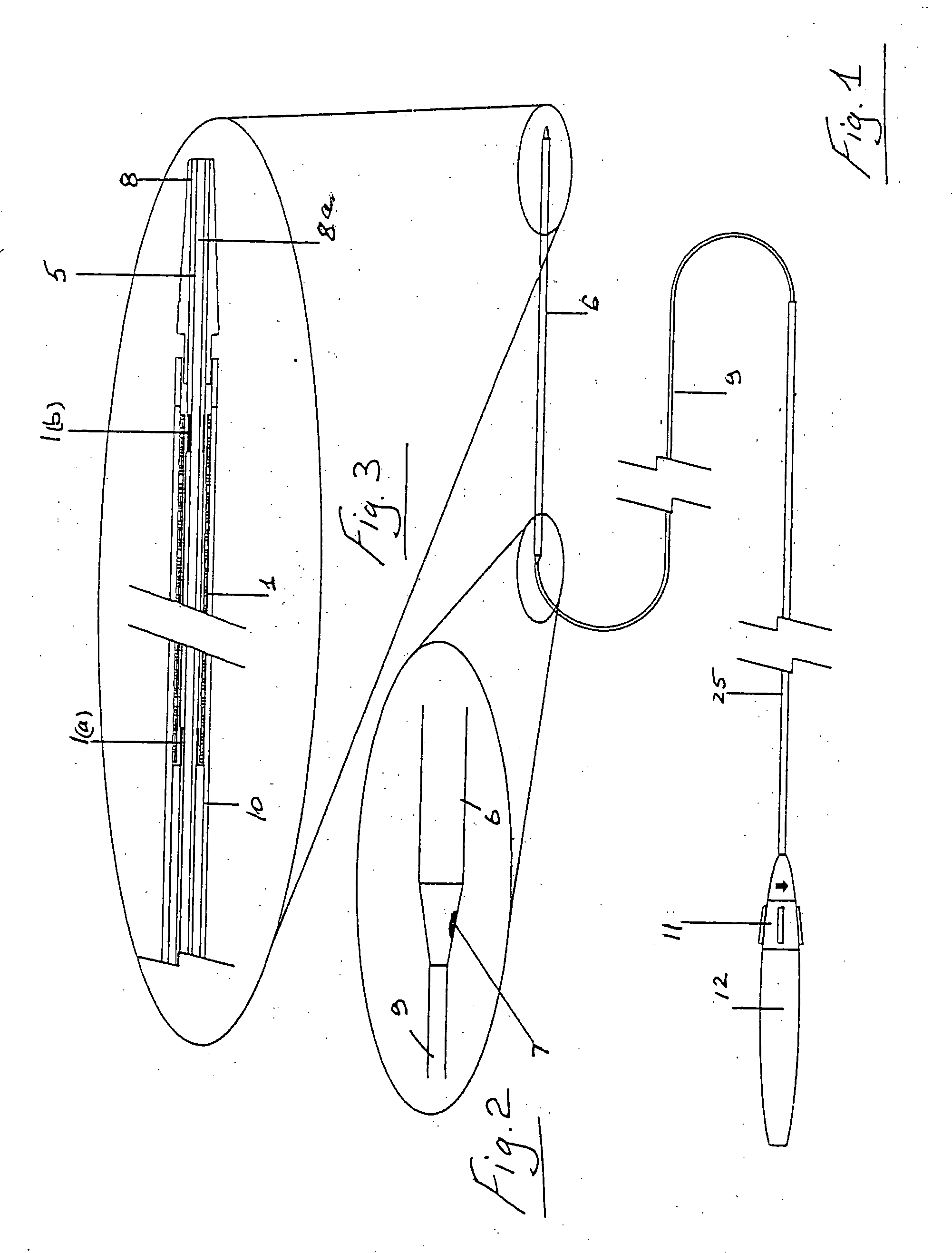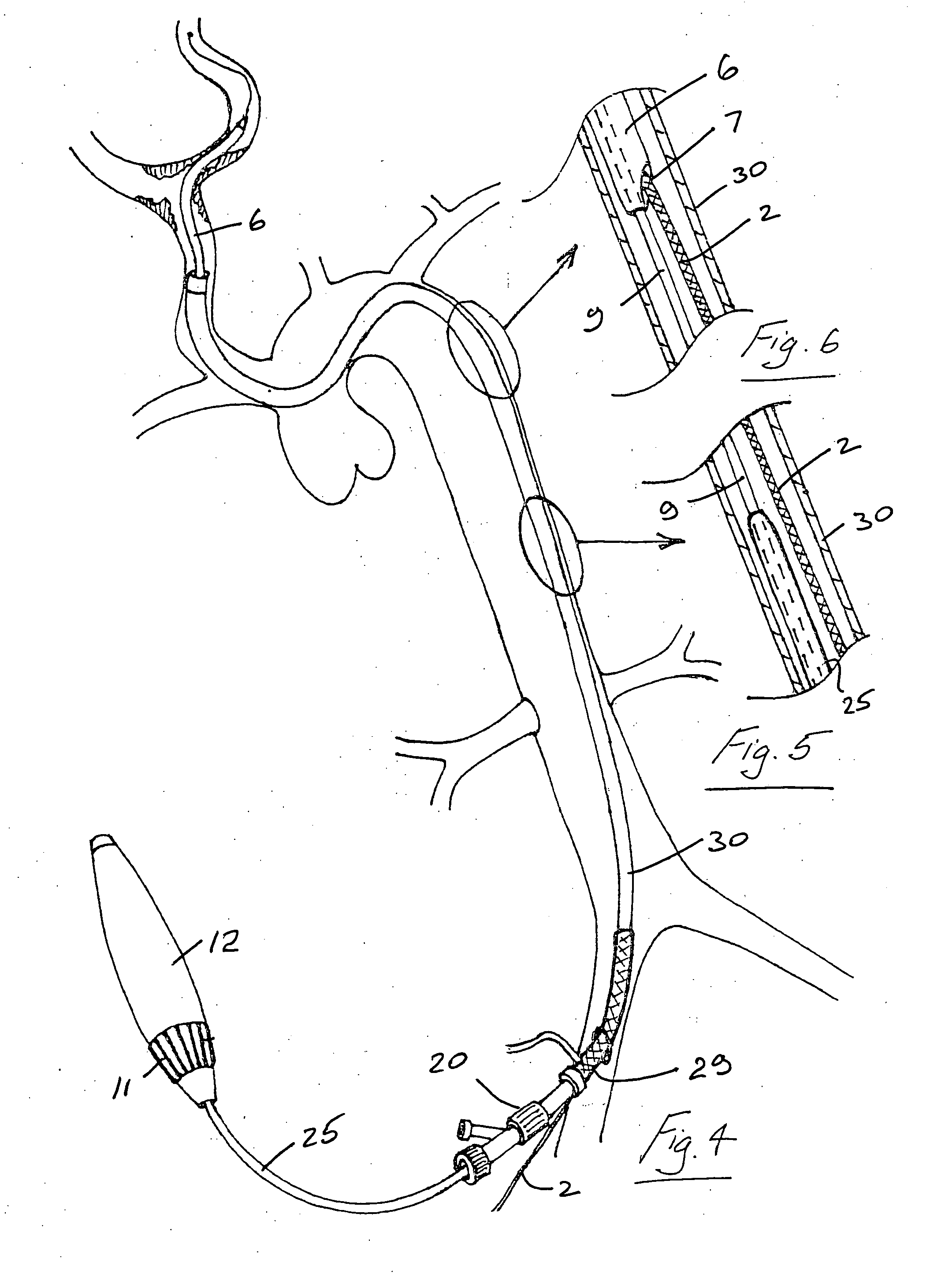Stent delivery and deployment system
a stent and vascular wall technology, applied in the field of stent delivery and deployment system, can solve the problems of inaccurate deployment at the target site, reduced vascular wall support at the site of deployment, and difficult use of conventional self-expansion stent delivery system,
- Summary
- Abstract
- Description
- Claims
- Application Information
AI Technical Summary
Benefits of technology
Problems solved by technology
Method used
Image
Examples
Embodiment Construction
[0112] Referring to the drawings and initially to FIGS. 1 to 13 thereof there illustrated a delivery and deployment system for a self expanding stent 1. The system is in this case configured for use with a guidewire 2 of the rapid exchange type with a distal tip 3.
[0113] The system comprises an inner core 5 about which the stent 1 is located and a catheter shaft 9 having a distal sheath 6 which retains the stent 1 in a compressed configuration during delivery through the vasculature of a patient to a deployment site as illustrated for example in FIG. 9(a). To deploy the stent 1 the sheath 6 is drawn proximally relative to the inner core 5 and the stent expands into a deployed configuration as illustrated, for example in FIG. 9(b). The sheath 6 has a rapid exchange guidewire exit port 7.
[0114] The delivery system has a distal tip 8 with a guidewire lumen 8a. Marker bands 1a, 1b are provided for visualisation of the inner core 5 at the proximal and distal ends of the stent 1.
[0115]...
PUM
 Login to View More
Login to View More Abstract
Description
Claims
Application Information
 Login to View More
Login to View More - R&D
- Intellectual Property
- Life Sciences
- Materials
- Tech Scout
- Unparalleled Data Quality
- Higher Quality Content
- 60% Fewer Hallucinations
Browse by: Latest US Patents, China's latest patents, Technical Efficacy Thesaurus, Application Domain, Technology Topic, Popular Technical Reports.
© 2025 PatSnap. All rights reserved.Legal|Privacy policy|Modern Slavery Act Transparency Statement|Sitemap|About US| Contact US: help@patsnap.com



